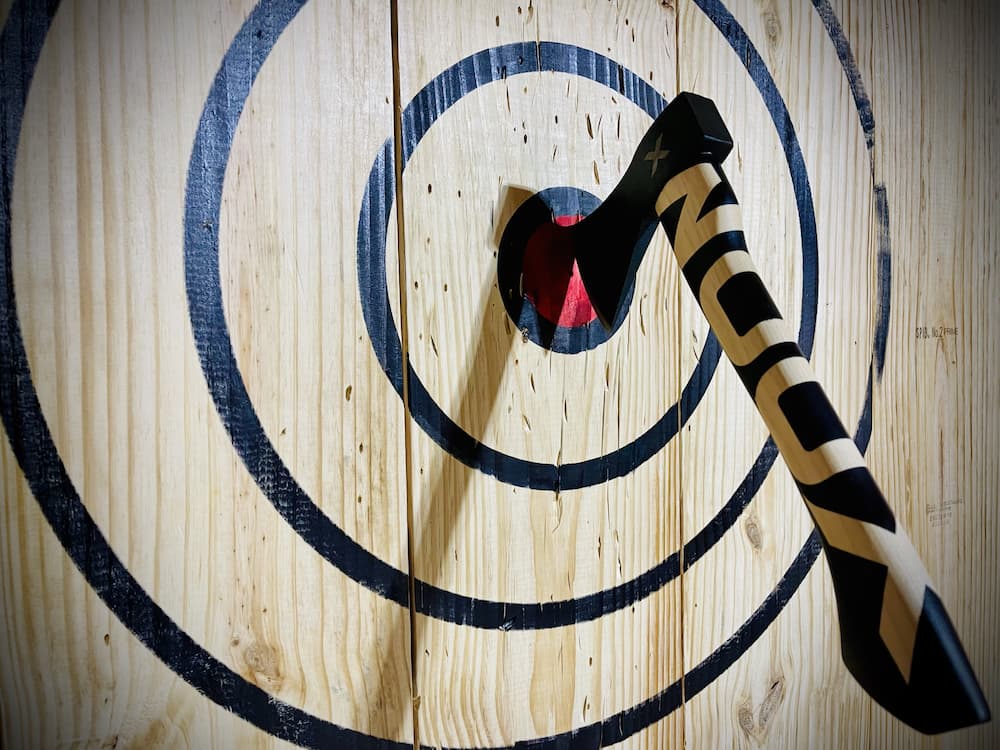The Enjoyable of Axe Throwing: How This Sporting Activity Combines Skill and Adrenaline for a Blast
Axe throwing has actually emerged as an astounding sporting activity that masterfully intertwines the need for accurate skill with the rush of adrenaline, offering participants a special and engaging experience. The act of hurling an axe in the direction of a target requires concentration and strategy, concurrently cultivating an environment of friendship and friendly rivalry. This interesting mix of psychological emphasis and physical exertion has made axe throwing a popular choice for those seeking both recreation and a feeling of accomplishment. To truly appreciate the depth and allure of this task, one must consider its beginnings, the needed devices, and the fundamental strategies that make certain both safety and pleasure.
The Beginnings of Axe Throwing
Axe tossing, a leisure task that has actually acquired substantial appeal in current years, traces its roots back to old times. The earliest records of axe use in affordable contexts are located amongst the Celts and Vikings, who threw axes for sport as well as in battle training.
Medieval European warriors, especially throughout the Center Ages, practiced axe throwing as part of their martial training. The Francisca, a type of tossing axe made use of by the Franks, came to be famous for its deadly accuracy. This conventional tool was made to be thrown at enemy shields and armor, showcasing its double utility in both sporting activity and fight.
In more recent background, axe throwing saw a rebirth in the logging camps of The United States and copyright in the 20th and 19th centuries. Lumberjacks would certainly participate in friendly competition, testing their precision and strength by focusing on wooden targets. This development from a survival ability to an entertainment task has actually led the way for its modern-day rebirth, with devoted venues and organizations currently celebrating the sport globally.
Devices You Need
Comprehending the abundant background of axe throwing enhances the admiration of the sport's modern iteration. For leisure and affordable axe tossing, the most typically utilized kind is the hatchet, commonly weighing in between 1.25 to 2 extra pounds with a handle length of about 16 inches.
Similarly essential is the target. Regulation targets are created from timber, with softwood ranges like want or cottonwood being chosen for their ability to hold the axe and absorb. The target is generally separated right into 5 concentric circles, each with a details factor value, to assist in scoring.
Security gear, however frequently ignored, is vital. Protective gloves can improve hold and protect against blisters, while closed-toed shoes are a should to protect feet from dropped axes (ax throwing denver). Ultimately, a well-lit, sizable tossing location, full with security barriers, ensures a controlled setting where participants can concentrate on sharpening their abilities.
Standard Techniques Discussed
Understanding the fundamental strategies of axe throwing is vital for both safety and security and proficiency. The leading hand ought to be placed directly listed below the axe head, while the non-dominant hand sustains the end of the take care of.
Next, concentrate on the position. Stand with your feet shoulder-width apart, ensuring your body is balanced. Your dominant foot must be a little ahead, lining up with your target. This positioning aids in maintaining stability and guiding power accurately in the direction of the target.

Safety First
Making sure security in axe throwing is critical to creating an injury-free and pleasurable experience. A well-designed axe tossing center functions clear demarcations in between tossing lanes, strong backdrops to capture stray axes, and non-slip flooring to avoid accidents.
Benefits of Axe Throwing
Axe tossing offers a myriad of benefits that prolong past basic recreation. The recurring activity of throwing the axe likewise boosts hand-eye sychronisation and fine electric motor abilities.
Emotionally, axe tossing calls for strategy, accuracy, and emphasis, making it an exceptional means to develop cognitive abilities. The focus needed to strike the target can function as a form of mindfulness, permitting individuals to remove their minds and decrease anxiety. This psychological engagement can be especially useful in helping people create far better problem-solving abilities and psychological durability.
Socially, axe throwing is frequently appreciated in group setups, promoting team-building and sociability. Whether as part of a corporate event or a laid-back trip with buddies, the sport motivates interaction and partnership. In addition, the public experience of discovering and enhancing with each other can reinforce relationships and develop enduring memories.
Final Thought

The earliest records of my blog axe usage in competitive contexts are discovered among the Celts and Vikings, who tossed axes for sporting activity as well as in battle training. Launch the axe when your hands are approximately at eye level, enabling the axe's natural rotation to direct it towards the target.
A well-designed axe tossing facility features clear demarcations in between throwing lanes, sturdy backgrounds to catch stray axes, and non-slip flooring to avoid crashes. Participants have to be advised on the proper way to toss the axe and deal with, stressing managed, purposeful activities over powerful tosses.
In summary, axe tossing stands out as a sporting activity that masterfully incorporates skill, adrenaline, and precision.